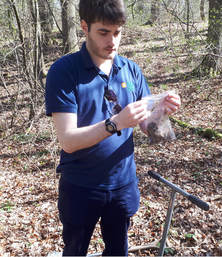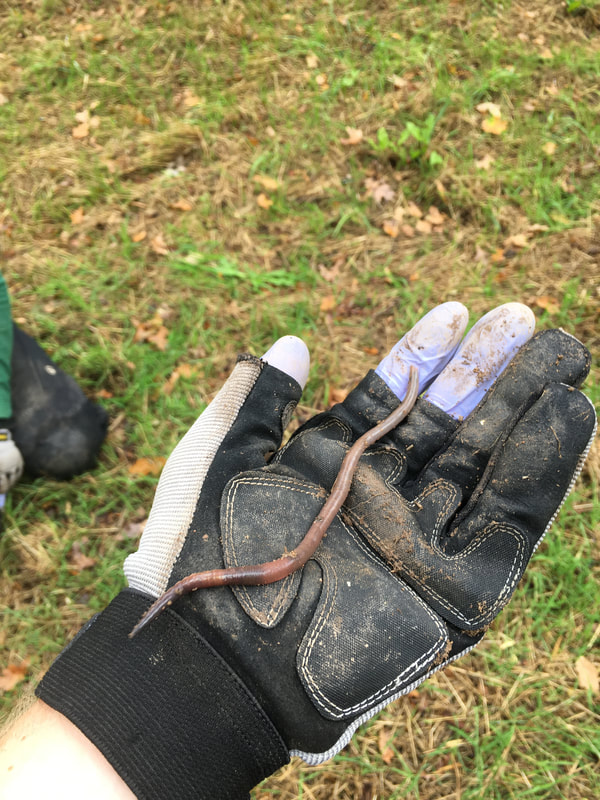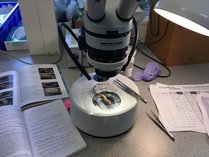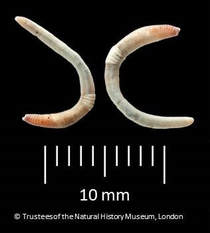|
By Frank Ashwood (Forest Research) and Justin Byrne (Newcastle University) At the recent WrEN project conference in London, the team demonstrated how previous and ongoing projects are unravelling complex woodland ecological relationships at local and landscape scale in England and Scotland. These studies have so far focussed on above-ground woodland ecology; however a new flagship project is now unravelling the links between below-ground ecology and the function of the woodland above. This collaborative project is being led by Forest Research and the University of Stirling, in partnership with Natural England and the Woodland Trust, and aims to study long-term soil development and soil biodiversity of broadleaf woodlands. The WrEN ‘soils’ project started in late 2016, when Forest Research staff visited 21 woodland and farmland sites across the English midlands. The chosen sites were a chronosequence of secondary broadleaf woodland (50–100 years old; these form part of the WrEN network), ancient semi-natural woodland (over 400 years old) and agricultural land adjacent to these woodlands (representing former land-use in the area). At each site, a range of samples were taken to analyse soil quality (such as soil nutrient and carbon stocks), as well as surveying earthworm species and abundance. Project lead Frank Ashwood presented preliminary results to stakeholders at the recent WrEN project conference in London. The early results showed how soil organic carbon and nitrogen stocks increase with afforestation and woodland age. Other findings included soil acidity and bulk density changes after the afforestation of agricultural land. The soil ecological data revealed shifts in key earthworm functional groups following afforestation, which was linked back to important changes in soil physical and chemical quality. Another highlight was the discovery of the UK’s rarest earthworm species (the pygmy earthworm - Dendrobaena pygmaea), demonstrating the ecological value of undertaking this type of research One of the main strengths of the WrEN project is its openness and opportunity for wider collaboration; as a result, the WrEN soils project is now partnering with the University of Newcastle to expand the soil ecological research focus even further. Soil microbial populations from each site are being studied as part of a PhD project being undertaken by Justin Byrne in Darren Evans’ group. Soil cores taken from the woodland and agricultural field sites are currently being analysed for fungal and bacterial microbes. By employing the latest, next-generation DNA sequencing techniques Justin hopes to determine how the communities of soil microbes found at the sites change across a range of soil conditions and woodland ages. Understanding the factors that affect soil microbial community composition is essential to predicting the effects of environmental changes on soil health. Working with the WrEN soil project has allowed the network ecology team at Newcastle to gather data quickly and cost-effectively, while providing a more comprehensive understanding of soil biodiversity to the WrEN project. Justin hopes his findings will provide a grounding for further work examining microbial decomposers in woodland soils. As well as improving our fundamental understanding of woodland soil development and below-above ground ecological links, this project is expected to inform the long term soil carbon and nutrient sustainability and biodiversity benefits of future woodland creation on agricultural land, as part of the wider research objectives of the soil sustainability research programme at Forest Research: https://www.forestry.gov.uk/fr/soilsustainability. You can follow Frank and Justin on their webpages and twitter for updates on both projects.
Frank’s pages: https://www.forestry.gov.uk/fr/infd-93sjef https://twitter.com/FrankAshwood Justin’s pages: https://www.researchgate.net/profile/Justin_Byrne2 https://twitter.com/learning_bio
6 Comments
|
AuthorElisa Fuentes-Montemayor Kevin Watts, and Kirsty Park (for more info go to About WrEN) Archives
January 2019
Categories |






 RSS Feed
RSS Feed